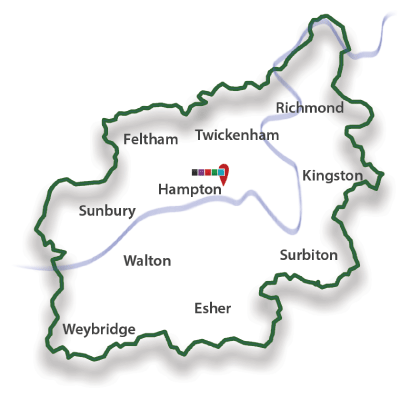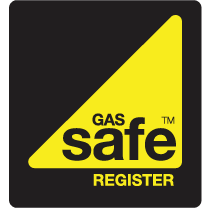
Online Booking
020 8090 0778
Glossary of Terms
A-Rated
Energy ratings from A to G are based on EU standards and are used to rate energy efficiency and energy saving potential. "A-Rated" indicates the highest performing and best at energy saving. An "A-Rated" appliance will be most energy efficient and could save money and reduce impact on the environment.
Airlock
Blockage in a plumbing or heating system caused by trapped air.
Automatic air vent or Air separator
Used in wet central heating systems to automatiacally expel any trapped air thus reducing the chances of an air lock.
Balanced flue / room sealed
Ducting system designed to draw fresh air from the outside and to expel gases to the outside, hence balanced flue boiler.
Ball cock valve
Special valve found in toilet cisterns and cold water storage tanks,has extension arm with plastic float ball on the end which floats up and down with level of water shutting off valve when max water level reached.
Boilers
Condensing Boilers
Condensing boilers are far more efficient that older boilers however if your system is poorly designed, the hard earned efficiency of the boiler will largely be lost.
The efficiency is gained by the fact that when gas burns in air a large amount of water, as well as heat, is produced. In older boilers, the water remains as a vapour and disappears with the hot flue gases (around 180 degrees C). Condensing boilers use the returning central heating water to pass close to the area where the flue gases are being expelled from the boiler. This allows the cool central heating water to be warmed by the escaping flue gases and in-turn allows the water vapour to condense. When the water vapour condenses, it releases chemical latent heat that warms the cool central heating further! Now the warmer cool central heating water passes into the main heat exchanger, to be heated to full temperature, requiring less energy than would have been needed if the condensing facility was not there. Central heating water returning from the radiators on a poorly designed system will not loose enough heat to be entering the boiler at a cool enough temperature to allow the flue gas water vapour to condense; the chance to capture latent energy has literally gone up in smoke!
Combination Boilers
A combination boiler is designed to heat heating water. Additionaly, it has a clever set of valves that divert the heating water through a specialised compact radiator (plate heat exchanger), through which your cold tap water passes. The plate heat exchanger allows the heating water to be cooled by the incoming cold water. Consequently, the outgoing cold water is now hot enough to be used at a hot water the tap. Hot water is supplied on demand. No storage tanks are required. As with all things in life, there are pro's and con's depending on size of the property, how many occupants, incoming mains pressure a combi may not always be the right choice despite space saving potential.
Regular or Conventional boiler
A regular boiler is designed to heat water only. Through the external controls pumps and valves determine where the water is needed, either to the heating circuit or to heat stored water in the cylinder for use at the taps. The hot water tank usually has an immersion heater as a back up source of heating. This system usually has 2 tanks at high level to supply water for the heating system (f&e feed and expansion tank) and water for the cylinder supply Cold water storage cistern . However this is not always the case as both systems can be unvented (see unvented section).
A system boiler
Just like a regular (conventional) boiler works on the principle of stored hot water. However, a system boiler differs from a regular boiler in some important respects.
Firstly, many of the major individual components of the heating and hot water system are built into a system boiler, which means that installation is quicker, neater, easier and more efficient.
Secondly, the hot water is pumped from the system boiler through the heating system to the radiators and hot water cylinder, resulting in a fast response and more economical running costs. The system boiler removes the need for a feed and expansion cistern.
all new boilers supplied in England of the above are of the high efficiency condensing type
Carbon monoxide
Produced from the partial combustion of carbon-containing compounds such as gas. It is silent, colourless, odourless and potentially lethal. To prevent against carbon monoxide exposure you should ensure gas appliances, such as your boiler, are installed and serviced regularly by a Gas Safe registered engineer. In addition, all businesses have a responsibility to ensure appliances meet the Gas Safety (Installation and Use) Regulations 1998 and The Health and Safety at Work Act 1974. Additionally carbon monoxide alarms are available in most plumbers merchants and DIY stores at around £20.
Cold Water Storage tank
Used in domestic plumbing systems for cold water storage that feeds bathroom taps etc, also feeds hot water cylinder. Also used as expansion tank in wet central heating systems.
Combination boiler (Combi boiler)
An efficient and compact boiler that provides both your heating and hot water 'on demand'. Cold water is supplied directly to the boiler from the mains supply and heated when required. So, no cold water storage tank in the loft or hot water cylinder in your airing cupboard (as is the case for traditional boilers). This space saving makes combi boilers very popular, especially in smaller houses.
Cylinder-hot water tank
Typical copper storage tank used to heat and store domestic hot water. All now come pre lagged in dense foam to improve energy efficiency.
Cylinder thermostat
Used to regulate the water temperature in the cylinder (the temperature of the water at the taps). Works in conjunction with the programmer and zone valve.
Drain cock
Typically found at bottom of hot water cylinders and lower levevel radiators to drain down system.
Expansion vessel
When water is heated it expands. In traditional systems there is a feed and expansion tank that allows the movement and expansion of heated water. On un-vented systems, boilers and cylinders a vessel is used to absorb this expansion. The size of the vessel depends on the amount of water that is being heated.
Fan flued / Fan assisted boiler
Now the standard across all new boilers. The fan draws in air for combustion and expels the gases after combustion through the flue system.
Flue
The flue is the means of conveying products of combustion safely from the fuel burning appliance ( boiler, fire etc) even an open fire has a flue (chimney as you would better know it). Modern boilers use a flue system that also draws air in through the flue system and thus increasing the safety of modern fuel burning appliances.
Gravity fed
Phenomenon occuring for example in a hot water cylinder as the water is heated it becomes less dense hence rises to the top of cylinder and as this water is drawn off cold water is fed to the base of cylinder to replenish and cycle continues. This principle is also used in older heating systems where no pump is fitted on the pipework between the boiler and the cylinder.
Heat exchanger
There are various types and designs but the basic fundamentals remain in that it is where the heat from combustion is transferred into the water and then pumped to where it is needed.
Heat Pumps
Heat pumps use sustainable energy sources to deliver low-cost heating and hot water all year round.Heat pumps meet the needs of a wide range of properties Ground and air source heat pumps use the latent energy in the ground or outside air to provide low cost heating and hot water for virtually any type of property.
Air to water heat pumps
Air to water heat pumps are intended to be the sole source of home heating.They use the constant latent energy available in the outside air with a refrigerant circuit, the heat generated is used to create hot water for a traditional pressurised heating and hot water system.
Air to air heat pumps
Air to air heat pumps can provide heating and cooling, they're ideal for heating spaces such as apartments, smaller homes and conservatories. They can create hot or cool air to be distributed within a property.
Air to air heat pumps
also feature advanced air purification technology which is particularly beneficial to allergy sufferers.
Ground source heat pumps
Ground source heat pumps can provide all the heating and hot water needs for your home.
The heat pumps work by drawing on natural, renewable energy in the ground around your home to deliver low cost, comfortable heating and hot water.
Mid position motorised Valve
Motorized valve used in central heating systems to divert water to cylinder or central heating or both at same time.
Motorized valve or Zone valve
Used in central heating systems in conjunction with either a room thermostat or cylinder thermostat and programmer to open when there is a demand. Typically between 2 and 3 on domestic systems.
Pressure Relief Valve PRV
Now common on many boilers and systems of the un vented variety. The PRV is set to release excess pressure should a fault occur. The PRV should be connected to pipework that would safely take the excess water away in the event of a fault. Typically if the expansion vessel is faulty the PRV will operate.
Programmer-timer unit
Used in modern central heating systems and can be programmed to various timer settings. In modern systems it should be possible to have completely independent control of both heating and hot water systems.
Programmable room thermostat
A programmable room thermostat combines a room stat with a programmer. This enables you to set different room temperatures for different times of the day and night.
When set up correctly, a programmable room thermostat prevents the system from having to heat the house from a 'cold start'. The control always maintains a temperature within the property and this ensures that the boiler is only ever 'topping up' the temperature in the home. As a guideline, target temperatures should be set at 21 C for comfort temperature and 15 C for economy temperature.
Pump-Central heating
To pump hot water round the central heating system and hot water circuits. Pumps vary in power and should be sized correctly for the application. New pumps now need to meet current efficiency standards and come in A rated versions.
Radiator
Part of a central heating system to radiate the heat into the room. They come in many shapes, sizes and heat outputs to suit all types of houses and applications.
Thermostats and remote thermostats (wireless)
There are various types of thermostats used in central heating systems, however they all have one thing in common in that they detect temperature and depending on settings will switch appliances on and off as required.
Wireless controls
Boiler / heating controls are radio frequency (RF) which means there'd be no disruption to walls, flooring or furnishings to have them installed.
Optimisers
Some of our boiler and heating controls have optimiser functions that tell the boiler when to fire. This means that your home can be brought up to temperature at precisely the time you require.
Weather Compensation
The most efficient controls include weather compensation which comes with an outdoor sensor. It assesses the temperature outside the house and adjusts the output of the boiler accordingly, resulting in the most efficient use of fuel.
TRV (Thermostatic Radiator Valve)
Controls the temperature of an individual radiator/room. The TRV device is fitted on the side of the radiator and enables adjustment of the heat in that particular area or room.
Underfloor heating
Underfloor heating is designed to deliver highly efficient heating in its own right, as well as being an ideal partner to heat pumps and condensing boilers.
Underfloor heating is suitable for refurbishments and new build. It operates at lower temperatures, helping to increase the efficiency of the boiler or heat pump and reduce running costs. Unlike radiator systems, underfloor heating distributes heat more evenly, increasing user comfort. It's also cleaner, helping to reduce dust, the risk of house mites and increases wall space. Electric underfloor systems are also available but are likely to have a higher running cost.
Unvented cylinder
Unvented cylinders work directly from the mains supply of water and are essentially a hot water storage cylinder, whereas vented cylinders are connected, via a vent pipe, to the cold water storage tank which is usually located within the loft space of most properties. Because unvented cylinders are fed directly from the mains supply of water, the water pressure and flow is much stronger, providing hot water at mains pressure to all outlets within the home. This means you don't have to rely on a pump to maintain the strength of the flow when using hot water outlets or heating systems and great water pressure is a huge benefit, especially for homes with more than one bathroom.
Unvented (pressurised) heating
This system does away with the need for a feed and expansion tank and is filled manually by way of a valve arrangement. The expansion created by the heated water is taken care of by an expansion vessel that absorbs the additional pressure. Additionally on this type of system you will find a pressure gauge and a safety discharge pipe incase vessel should fail.
Warm Air Heating
This system much less common now comprised typically of a centralised unit that would heat up air. A fan would push the air through ducting to each of the rooms whilst cooler air would be drawn back via return air ducting. The benefit was quick heat up time, however when turned off cool down time was equally quick.
Wet system
Central heating that pumps heated water to warm dwelling opposed to dry system such as electric storage heaters or warm air.






